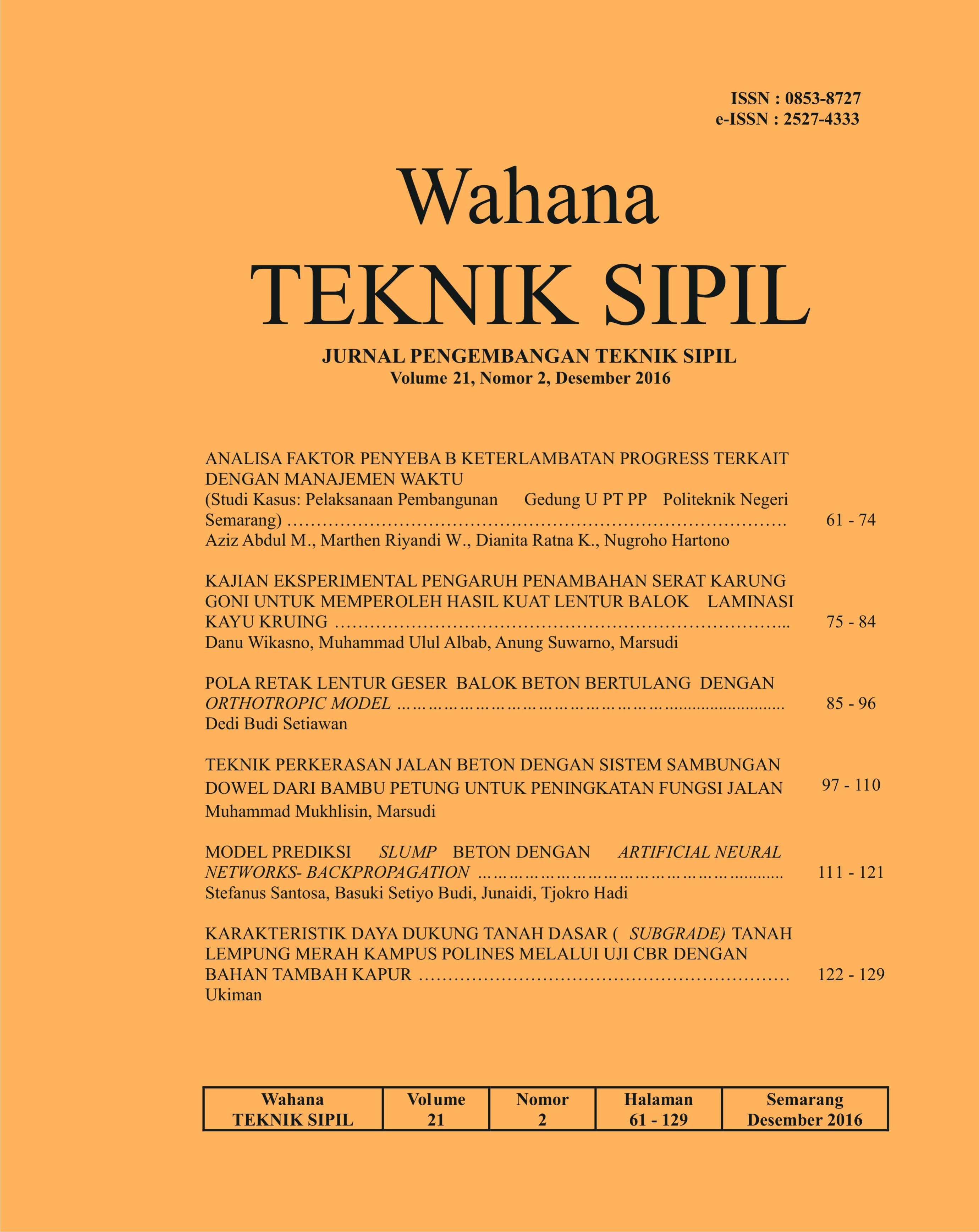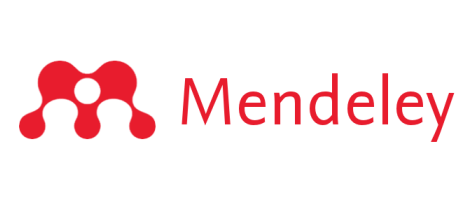POLA RETAK LENTUR GESER BALOK BETON BERTULANG DENGAN ORTHOTROPIC MODEL
DOI:
https://doi.org/10.32497/wahanats.v21i02.833Abstract
Test the load to collapse needed to test the reliability of the structure , ie by knowing the maximum load that can be borne by the structure. The process of bending and deflection of reinforced concrete beams is also necessary for students to understand the world of construction and reinforcement due to shear or bending , through experimental studies and numerical studies. Whereas laboratory tests conducted on relatively more expensive. One solution to the numerical methods are finite element methode. The main purpose of this research is to create a simulation of bending, deflection, maximum load and cracking for reinforced concrete beam with orthotropic models. So the simulation of bending, deflection, maximum load and cracks can be represented with this program without always perform laboratory testing. Program performance is analyzed based on laboratory test results and literature. The pattern of cracked beam bending shear formed shows the influence of concentrated loads are in the area moment of pure, cracks formed experiencing slope indicating still have a shear work but further away from the location of concentrated load slope becomes increasingly erect indicating less influence concentrated load , While near the pedestal cracks experiencing tilt direction marks in those areas experiencing the combined effects of shear stress and maximum normal stresses are close to zero and the impact of support reaction. The pattern of cracked beam bending pure looks toward the crack perpendicular to the horizontal axis beam this is due to the absence of shear stress working along the span structure, in the absence of shear strain, the strain off the main drag parallel to the horizontal axis and direction cracked up to be perpendicular direction tensile strain, this corresponds to the existing reference.
Kata kunci : finite element, reinforced concrete beams, crack pattern.
Downloads
Published
Issue
Section
License
Authors who publish with this journal agree to the following terms:Authors retain copyright and grant the journal right of first publication with the work simultaneously licensed under a Creative Commons Attribution License that allows others to share the work with an acknowledgement of the work's authorship and initial publication in this journal.
Authors are able to enter into separate, additional contractual arrangements for the non-exclusive distribution of the journal's published version of the work (e.g., post it to an institutional repository or publish it in a book), with an acknowledgement of its initial publication in this journal.
Authors are permitted and encouraged to post their work online (e.g., in institutional repositories or on their website) prior to and during the submission process, as it can lead to productive exchanges, as well as earlier and greater citation of published work (See The Effect of Open Access).






